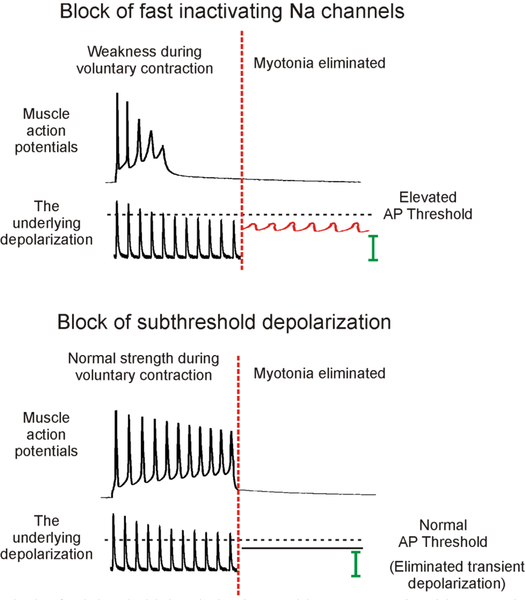Figure 4:
Block of subthreshold depolarization could treat myotonia without causing the weakness that can accompany block of fast-inactivating Na channels. The top trace shows the effects of treating myotonia by raising action potential threshold via block of fast-inactivating Na channels with mexiletine. Note that the action potentials become steadily smaller, due to reduced muscle excitability, until they fail. This is in contrast to the muscle action potentials in myasthenia gravis depicted in Fig. 1, which are normal; then suddenly disappear when the endplate potentials fail to reach threshold. While block of fast-inactivating Na+ channels can effectively eliminate myotonia by raising threshold above the voltage reached by subthreshold depolarizations, it runs the risk of causing failure of neuromuscular transmission, such that there is weakness. In the lower trace, myotonia is eliminated by blocking transient subthreshold depolarization. Alternately, if the steady subthreshold depolarization could be blocked it would also be possible to eliminate myotonia. As subthreshold currents play little to no role in setting action potential threshold, activation of muscle during voluntary contraction is unaffected such that there is no weakness. AP = action potential.

